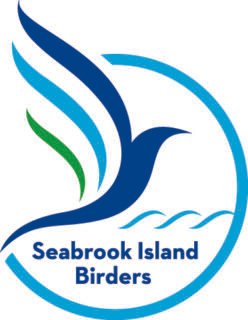
On May 13, Ed and I departed for an 18-day trip to Europe! It was our first trip “across the pond” in 10 years! And it felt so good to go back. We flew to Paris and then took a 12-day Baltic cruise out of Le Havre. It was our first cruise, (I had a few butterflies on how it would go) and we had a hard charging itinerary seeing 11 cities in 12 days! Of course, on the agenda, there would be lots of birdwatching, along with excursions to the port cities we were visiting.


We had bought a small travel scope for our balcony on the ship, and we were excited to watch for some seabirds! It proved to be a little harder than we thought, but on the first day, we did have some nice Northern Gannets! We stalked all the areas on the top deck of the ship for wonderful views of the sea, and in our state room we had a map of our route on the wall. We found a lot of good birds as we came into ports also, which usually was through estuaries and various habitats. Common Gulls often followed the ship out of ports on the Baltic. In three of the ports, we had arranged guides to meet our ship and take us birdwatching for the day!


The first birding excursion was on our own in London. The port was in Tilbury where we had some nice sightings visible from the ship. There were many Common Shelducks and our first Eurasian Oystercatcher (looks just like ours!). In St. James Park and Kensington Gardens we found some usual suspects, the Eurasian Blue Tit and the European Robin, in beautiful settings in the gardens. No one does gardens like the Brits!




Our first big birding day was in Netherlands, to the west of Amsterdam. Our wonderful guide, Pim Julsong, met us at the ship and we headed to a national park close to the coast. The dunes were filled with bird songs early in the morning. A highlight was a Bluethroat, which I was so excited to see. Unfortunately for Ed the Bluethroat was far away and into the sun. But he worked his Lightroom magic for an image of this striking bird. There were several species of warblers, but an interesting fact we found was that European warblers are not very colorful, they mostly come in shades of brown, brown, and browner! Lol. We saw numerous Northern Lapwings with their striking plumage and wispy crests!




After the coastal national park, Pim took us to some different habitats and farmland. Highlights were a Eurasian Spoonbill and a Black-tailed Godwit, both life birds. The spoonbill looks like our Great Egret with a spoonbill. We only saw two, one was a fast drive by and gone. The second gave us good looks and was one of Ed’s favorite photo experiences for the trip. The godwit is the national bird of the Netherlands. It was a spectacular day and spectacular weather.


Our next bird excursion came in Lithuania. We docked in Klaipeda and were met by a driver who took us to the Vente Cape Ornithological Station. Located on a peninsula on one of the largest bird migration routes, it’s one of the oldest bird banding stations in Europe. The gentleman doing the banding, or “ringing” as it’s called in Europe, had been doing this for 40 years! I never saw mist nets like Vente Cape, they were huge.



Unfortunately, we had missed peak migration by about a week. Where were the 100 Ruff from the previous week??? We wanted so much to see a Ruff in breeding plumage! It was a very slow day, but I did get to release 2 warblers. It was an absolutely beautiful setting on the Coronian Spit. Another highlight of Lithuania was seeing nesting White Storks on telephone poles. And near the port we found one of my target birds for Europe, the Northern Wheatear!


A highlight of the trip was my first visit ever to Latvia, my parent’s homeland which they fled during World War II. Riga was such a beautiful city. I wore my mother’s amber necklace and pin and carried one of her Sunday handkerchiefs. And of course, we saw the Academy Award winning Flow cat!! It was a really special day!



Our third birding excursion came in Estonia, where our wonderful guide, Marko Poolamets met us. The ship came in at lunchtime, so we missed the morning hours of birding. But Marko took us to many habitats, and we wound up with a great list! I call it combat birding when you just go as hard as you can to get as many species as you can. Among the lifers were the Red-backed Shrike and the Yellowhammer. We discovered that Marko also works as an historian, documenting the many stories of families that fled Estonia in World War II, and those that remained under Soviet rule until 1999. I had much to talk about with Marko in addition to the birds!




Spring was in the air with many water birds having babies! In Stockholm, we saw the Great-crested Grebe with babies on her back. In Copenhagen, we saw Hans Christian Anderson‘s ugly duckling (Mute Swan) with her babies in a canal. And in Helsinki, we saw Barnacle Geese, a life bird, with their brood.



In addition to the birding tours, we had interesting and fun shore excursions – Copenhagen, Berlin, Gdansk, and Helsinki. We birdied every city park we could find, and I always carried my bins! The trip ended in Stockholm, a beautiful city with so much water surrounding it. It was a special trip. It’s a big, beautiful world and it was so nice to be back seeing it!
Article by Aija Konrad, Photos by Ed Konrad



